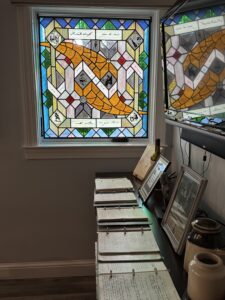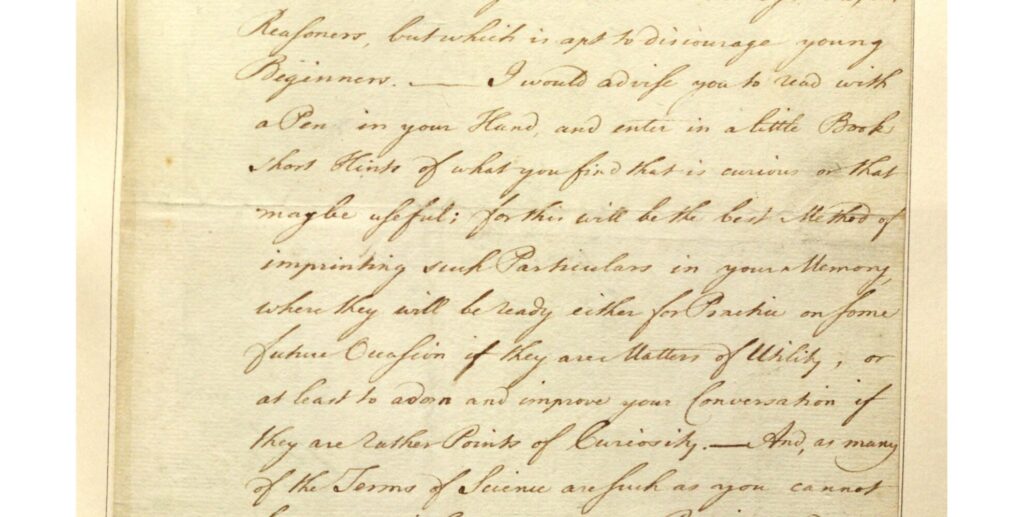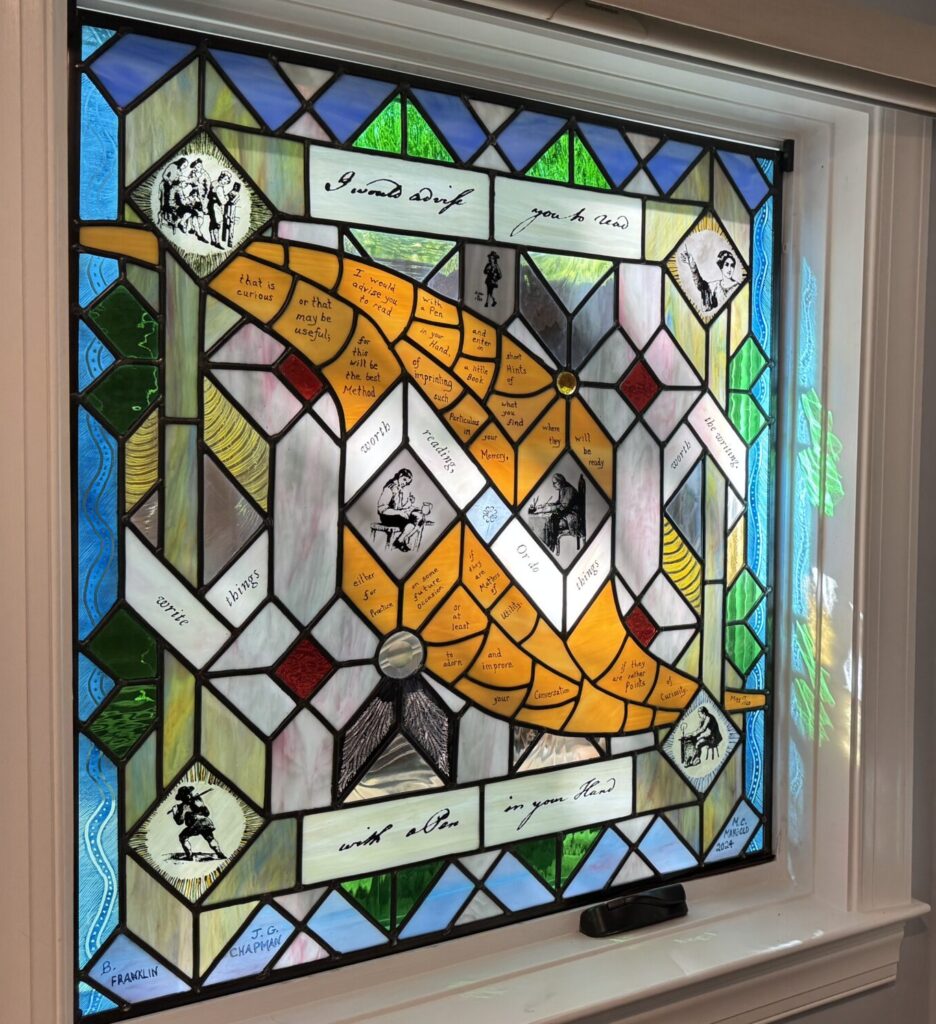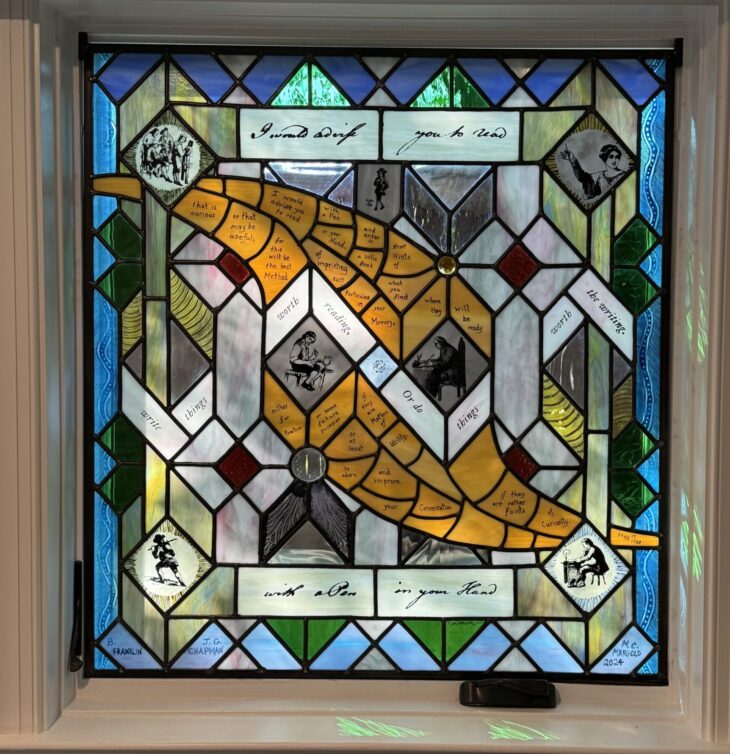
I’m happy to announce and document the installation of another stained glass panel in honor of Franklin, Read With A Pen, installed May 26, 2025.
– Martin Mangold, May 30, 2025
In May of 1760, Franklin was asked by his landlady’s daughter, Mary (“Polly”) Stevenson (1739-1795), how to become a philosopher. Polly was away from Craven Street, so Franklin sent a packet of books and wrote her a letter that included this sentence:
I would advise you to read with a Pen in your Hand, and enter in a little Book short Hints of what you find that is curious or that may be useful; for this will be the best Method of imprinting such Particulars in your Memory, where they will be ready either for Practice on some future Occasion if they are Matters of Utility, or at least to adorn and improve your Conversation if they are rather Points of Curiosity.
This was one of the first letters of Franklin’s that I read, browsing volume 3 of the Smythe edition in the library at North Texas State University. It impressed me enough that I started my “quotes book”, which has since expanded across several small ring binders:
As reading and writing were fundamental to Franklin’s life, and this letter one of my all-time favorites among his writing, a window dedicated to his reading and writing seemed important for my own library.
For the banner quote, I chose a proverb from Poor Richard of May of 1738:
If you wou’d not be forgotten
As soon as you are dead and rotten,
Either write things worth reading,
Or do things worth the writing.
Design Ideas
This piece is a partner to Keep Thy Shop, with the pattern reversed so the “swoop” goes from upper left to lower right, as opposed to lower left to upper right. KTS is installed to the left of RWAP, with one window remaining in between.

I decided the Folger Grid design and identical structure was plenty of continuity, and experimented with translucent glass in more place than transparent. As a result, this window is less dependent on external light.
I also experimented with paint, keeping the screen print technique but adding a lot of freehand painting with brush and pen, using various techniques.
The Images Here
- Franklin’s Handwriting: In August of 2023, The University of St. Mary of the Lake graciously provided a copy of the original letter for me to use in this window. I generated four screens from the fundamental nine words, “I would advise … you to read … with a Pen … in your Hand,” and painted using screen print technique. I resisted the urge to repeat the letter “y,” which is slightly different in its two appearances here.
- The banner proverb “either write….” is also screen printed, using Franklin’s Caslon typeface, which I first used in Keep Thy Shop. The little wingding in the center is exactly copied from that window.
- The rectangular images are from illustrations by J.G. Chapman: the lady with a pen in her hand is from his 1870 publication, American Drawing-Book: A Manual for the Amateur. The others are from his illustrations in the 1849 book by Rev. H. Hastings Weld, Benjamin Franklin: His Autobiography. I edited them all, screen printed them, and ornamented some with painting.
- Upper Left: Franklin overhearing his brother’s friends admiring a piece of his writing, the Silence Dogood letters: one of Franklin’s early successes as a writer.
- Upper Center: Franklin walking around Philadelphia munching bread on October 6, 1723: doing something worth the writing, and a tribute to Claude-Anne Lopez, who determined the date of this event.
- Upper Right: a woman with a pen in her hand.
- Middle Left, Middle Right, Lower Right: Franklin reading or writing at various times in his life.
- Lower left: Franklin walking to Philadelphia in 1729.
- The squiggly blue line with dots on the sides is a tribute to one of Harry Clarke’s windows in the Basilica of St Vincent de Paul, a Catholic Church in Bayonne. Jane and I visited on July 20, 2021. This figure appears near the seashells at the feet of St. Peter. (picture below)
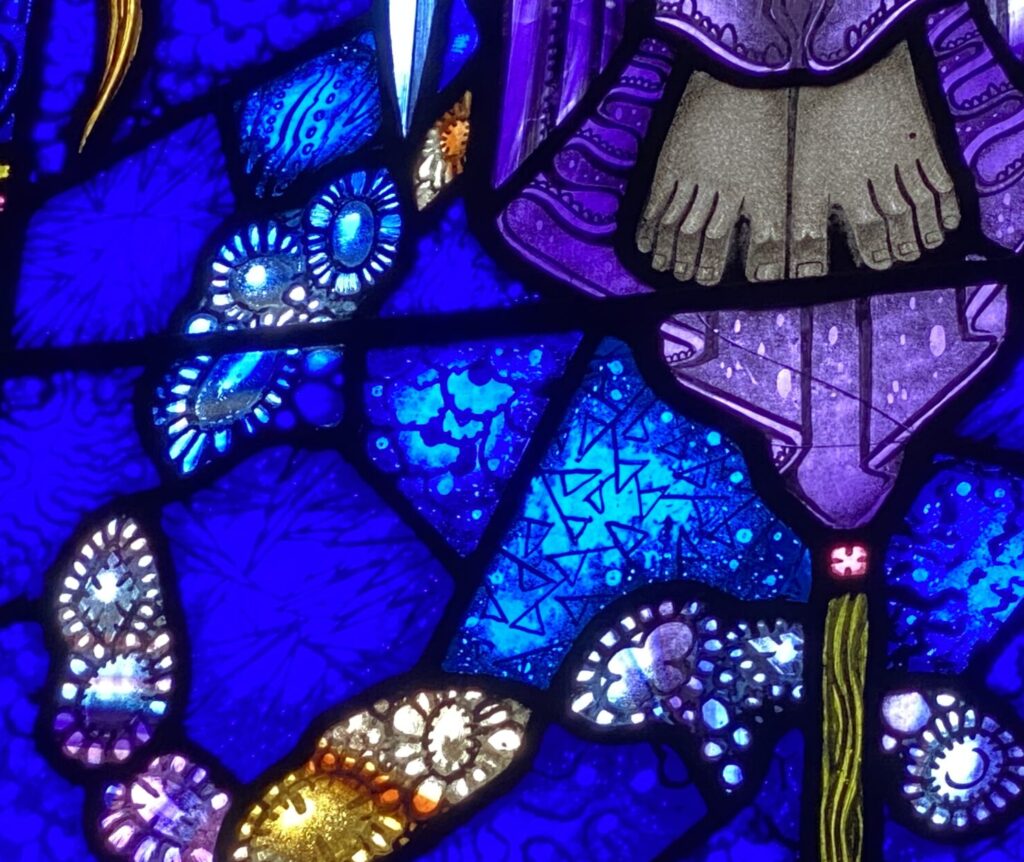
- The 59 words of the full sentence were an impulsive addition, handwritten with a pen in my hand.
- The other ornaments were for my own amusement, and exploring ideas for the third and final window of this set.
Polly’s Legacy
Mary Stevenson married William Hewson, who died in 1774. In 1786, Polly moved with her children to Philadelphia, was at Franklin’s side when he died in 1790. Polly passed away five years later at the age of 56.
The inscription on her tombstone includes that “her youth was distinguished by mental improvement.”
See Also
- Franklin’s Arrival – 300th Anniversary
- Keep Thy Shop window.
- Packard Humanities text of the letter.
- Polly Stevenson Hewson memorial on FindAGrave.
- Poor Richard, 1738, Founders Online, National Archives.
- Stained Glass postings on this website.

